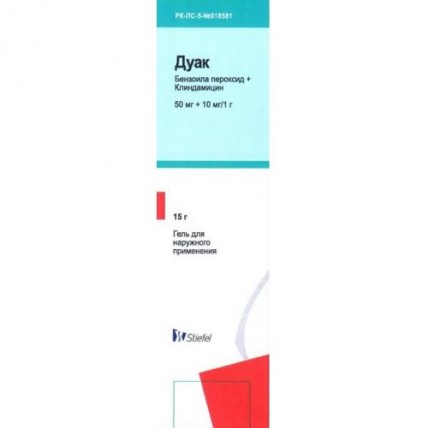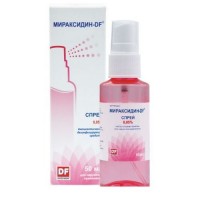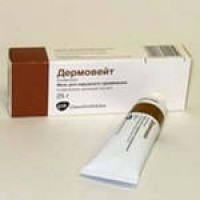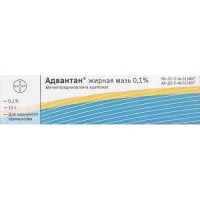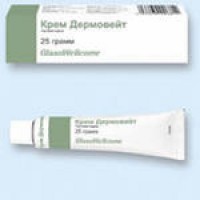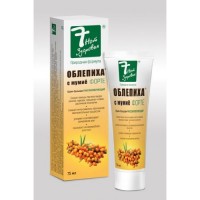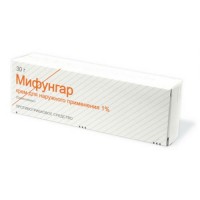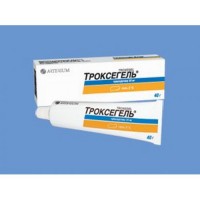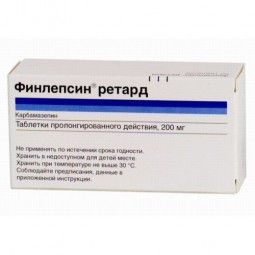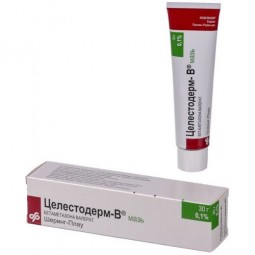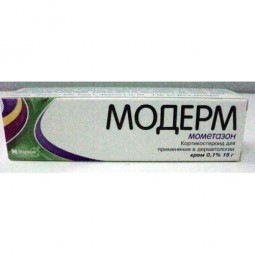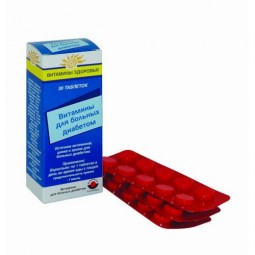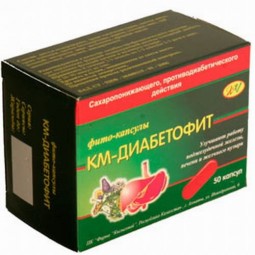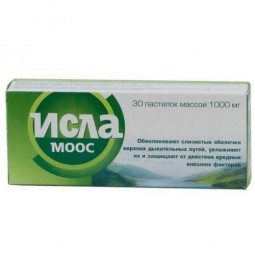Duak 15g gel for topical application
- $22.20
Out Of Stock
Sku:
7bf7ed1e1ebd
The instruction for medical use of Duak® medicine the Trade name of Duak® the International unlicensed name Is not present the Dosage form Gel for external use, 15 g Structure of 1 g of gel contain active agents: 10 mg of clindamycin (in the form of phosphate clindamycin), 50 mg of benzoyl of peroxide anhydrous (in the form of benzoyl of peroxide water), excipients: carbomer, dimetikon, dinatrium laurylsulphosuccinate, dinatrium edetat, glitserol, silicon dioxide colloidal water, half-oxameasures 182, sodium hydroxide, water purified. The description Uniform gel from white till light yellow color. Pharmacotherapeutic group Antimicrobial drugs for treatment of acne rash. Clindamycin combinations. The ATX D10AF51 code the Pharmacological Pharmacokinetics Clindamycin Clindamycin properties phosphate is quickly hydrolyzed to clindamycin by means of phosphatase of skin and metabolized to sulphoxide clindamycin. Considerable level of clindamycin was revealed in contents of acne rash of the patients applying it for two weeks. There are no proofs confirming effect of cumulation of clindamycin at its repeated use. Clindamycin is metabolized in a liver to active and inactive metabolites. Elimination half-life of clindamycin makes about 9 hours and is removed mainly with urine in the form of connections. At local use of clindamycin its removal with urine makes less than 0.06%. Benzoyl benzoyl peroxide peroxide is adsorbed by integuments where it is metabolized to benzoic acid. At topical administration less than 5% of drug get to a system blood stream where circulates in the form of benzoic acid and is removed together with urine. Clindamycin + benzoyl peroxide peroxide benzoyl Presence as a part of medicine does not influence absorption of clindamycin and its removal. The pharmacodynamics Klindamitsin is a linkozamidny antibiotic with bacteriostatic action concerning gram-positive aerobic microorganisms and a wide range of anaerobic bacteria. Linkozamida, such as clindamycin, contact 50S a subunit of a bacterial ribosome and suppress early stages of synthesis of protein. Effect of clindamycin mainly bacteriostatic though high concentrations can have slow bactericidal effect against sensitive strains. Though clindamycin phosphate is inactive in vitro, fast hydrolysis of in Vivo turns this connection into active clindamycin. The activity of clindamycin is shown clinically at treatment of comedones at patients with an acne at the levels sufficient for activity of drug against the majority of strains of Propionibacteium acnes. In Vivo clindamycin inhibits all tested cultures of Propionibacteium acnes (MIC of 0.4 mkg/ml). After clindamycin use the percent of free fatty acids on the surface of skin decreased approximately from 14 to 2% and also inflammation level due to suppression of a chemotaxis of leukocytes decreased. Benzoyl peroxide – high-lipophilic oxidizer with bactericidal and soft keratolytic action. Addition of benzoyl of peroxide reduces the potential of emergence of the organisms resistant to clindamycin. Benzoyl peroxide is effective for treatment of vulgar eels, in particular, of the caused Propionibacteium acnes. Besides, it counteracts excessive producing the skin fat which is associated with development of an acne. The resistance and cross resistance Therapy of an acne by means of monotherapy by antibiotics for intake and antibiotics for topical administration (clindamycin and erythromycin) were associated with development of antimicrobial resistance both to Propionibacteium acnes, and to organisms symbionts (Staphylococcus aureus, Streptococcus pyogenes). Use of clindamycin can lead ment of resistance to the above-stated organisms. Benzoyl peroxide has bactericidal effect. In the course of its use the development of resistance to Propionibacteium acnes was not revealed and also confirmed that its combination with clindamycin reduces the level of resistance of the last. The prevalence of the acquired resistance can vary depending on the geographic location and time. It is desirable to have data on resistance of microorganisms in the specific region before therapy. Indications - topical treatment of acne rash (acne vulgaris) from easy to moderate degree, in particular are also more senior than inflammatory defeats at adults and teenagers aged from 12 years the Route of administration and doses Adults and teenagers are more senior than 12 years the Drug Duak® is intended only for external use. The drug Duak® is applied 1 time a day (preferably in the evening) with a thin layer on all affected areas after careful clarification of skin the soft cleaning means and warm water. Before drawing be convinced that after washing the skin completely dried. If gel is not rubbed in skin with ease, it means that too large number of means is caused. Use of excessive amount of gel will not improve efficiency, but can bring to increase in risk of irritation of skin. After putting gel it is necessary to wash up hands. Perhaps, the patient will need additional moistening of integuments. At development of the increased xeroderma and its peeling it is recommended to reduce the frequency of putting gel, but the efficiency of the carried-out therapy was not investigated when putting drug less than once a day. The recommended period of use of the drug Duak® depends on the clinical answer of the patient, but treatment should not exceed 12 weeks of continuous use, and in case of the continuing therapy the attending physician has to estimate advantage of drug use. The medical effect on the inflamed and uninflammed affected areas becomes noticeable in 2-5 weeks from an initiation of treatment. Children the Efficiency and safety of the drug Duak® was not investigated at children 12 years are younger therefore its use for this age group is not recommended. Elderly Specific recommendations are absent. Patients with a renal failure of Dose adjustment it is not required as chrezkozhny absorption of clindamycin and benzoyl of peroxide is low at their external use, and the renal failure will not influence system exposure of drug. Patients with an abnormal liver function of Dose adjustment it is not required as chrezkozhny absorption of clindamycin and benzoyl of peroxide is low at their external use, and the liver failure will not influence system exposure of drug. Side effects Data on efficiency and safety were received from five randomized double blind studies at 1319 patients with front acne vulgaris. Frequency of occurrence was defined as follows: very often (& gt, 1/10), it is frequent (1/100 and & lt, 1/10), infrequently (1/1000 and & lt, 1/100), is rare (1/10000 and & lt, 1/1000) and is very rare (& lt, 1/10000). Very often - an erythema, peeling, xeroderma in the site of application of drug Often - burning sensation Infrequently - paresthesias in the site of application of drug - dermatitis, an itching, erythematic rash in the site of application of drug, exacerbation of a basic disease Post-marketing data Seldom - allergic reactions, including reactions of hypersensitivity and an anaphylaxis - colitis (including pseudomembranous colitis), hemorrhagic diarrhea, diarrhea, pain in a stomach - a small tortoiseshell in the site of application of drug - reactions in the site of application of drug, including discoloration Besides the above-stated reactions, when using gel with concentration of benzoyl of peroxide of 3% was noted development of photosensitivity in the site of application of drug that was registered as frequent side effect. In clinical trials when using only of clindamycin in the form of local appliques, development of side reactions in the form of a headache and pain in the site of application was noted that was registered as frequent side effect. Contraindications - hypersensitivity to lincomycin, clindamycin, benzoyl to peroxide and any other component of drug - enteritis, ulcer colitis, the antibiotiko-associated colitis, pseudomembranous colitis (existing or in the anamnesis) - children's age up to 12 years Medicinal interactions of Specific researches on interaction of the drug Duak® and other medicines it was not carried out. The drug Duak® should not be appointed in a combination with the products containing erythromycin in connection with possible antagonism between erythromycin and clindamycin. Clindamycin has the neuromuscular blocking properties that can strengthen action of other neuromuscular blockers. Thus, the drug Duak® has to be used with care at the patients taking the above-stated drugs. Combined use of the drug Duak® and a tretinoin, izotretinoin and tazaroten is not recommended as benzoyl peroxide can reduce activity of these drugs and lead to strengthening of irritation of integuments. If it is impossible to refuse this combination, the drug Duak® and other drugs have to be used at different times (one drug – in the morning, another – in the evening). Simultaneous use of the drugs containing benzoyl peroxide and the drugs containing streptocides can lead to temporary discoloration of skin and hairs of the person (yellow/orange color). Special instructions It is necessary to avoid contact of the drug Duak® with mucous oral area, eyes, lips, the damaged or angry sites of skin. In case of accidental contact it is recommended to wash out the field of drawing by a plentiful amount of water. At most of patients the excessive dryness and erubescence can develop in the first weeks of use of drug, if something happens, depending on weight of the specified symptoms, it is recommended to use the moistening means, to temporarily reduce the frequency of putting drug or to completely cancel its use for some time, nevertheless, the efficiency of the drug Duak® was not investigated at drug use less than 1 time a day. At co-administration of the accompanying therapy for treatment of an acne it is necessary to be careful, especially at the use of a peeling, abrasive soap and cosmetics having the drying effect as the cumulative irritating effect, sometimes heavy severity can be observed. At development of irritation of heavy degree (expressed erythema, dryness and burning), the drug Duak® has to be cancelled. Benzoyl peroxide can enhance sensitivity by sunlight in this connection, use of ultra-violet lamps (for example, in a sunbed) should not be appointed in parallel with the drug Duak®. Impact of sunshine on skin also has to be minimized. If it is not possible to avoid stay under direct sunshine, it is necessary to use protective cream and clothes. If the patient has sunblisters, they have to be cured before prescribing of the drug Duak®. The product can decolour hair or color fabrics in this connection, do not allow contact of drug with indumentum, fabrics, furniture, kovrolanovy coverings. Pseudomembranous colitis At use of the majority of antibiotics, including clindamycin, cases of development of pseudomembranous colitis which can vary from easy to zhizneugrozhayushchy degree which develops for several weeks of therapy came to light. In spite of the fact that emergence of such cases is improbable, at topical administration of clindamycin as a part of the drug Duak® at development of the long or profound diarrhea or emergence of spasms in a stomach, use of the drug Duak® has to be cancelled immediately, and the patient has to be sent to further inspection as these symptoms can indicate development of the antibiotiko-associated colitis. The resistance to Benzoyl clindamycin peroxide reduces development of resistance of microorganisms to clindamycin. Nevertheless, at the patients receiving in recent time therapy by erythromycin or clindamycin it is necessary to define sensitivity to Propionibacteium acnes and other symbionts before drug Duak® use. The cross resistance Was revealed cross resistance between clindamycin and lincomycin. The resistance to clindamycin often is associated with resistance to erythromycin. Pregnancy and the period of a lactation Are not present data on use of the drug Duak® during pregnancy. There are limited these uses for pregnant women of clindamycin and benzoyl of peroxide separately. Any influence of the drug Duak® on is not expected at its use for pregnant women in connection with local use of drug and its low system exposure. Nevertheless, use of the drug Duak® is recommended only when the advantage for mother exceeds potential risk for a fruit. There are no data on use of the drug Duak® during a lactation. Chrezkozhny absorption of clindamycin and benzoyl of peroxide is extremely low, nevertheless, it is unknown whether these components with breast milk after their local drawing are allocated. It is known that clindamycin is emitted with breast milk after its parenteral administration or intake. Use of the drug Duak® is recommended only when the advantage for mother exceeds potential risk for the child. In order to avoid unexpected swallowing drug by the child during feeding, it is impossible to apply Duak® on the lactating gland. Features of influence of medicine on ability to run the vehicle or potentially dangerous mechanisms of Researches it was not carried out. On the basis of the available data any effect on ability to run the vehicle or potentially dangerous mechanisms is not expected. Overdose Symptoms: the expressed degree of irritation that demands drug withdrawal before full regeneration of integuments. In case of accidental swallowing drug, development of gastrointestinal side reactions which are shown at systematic use of clindamycin is possible. Benzoyl peroxide: at topical administration it is not soaked up in the concentration admissible for development of system effects. Clindamycin: at absorption in large numbers the development of system effects is possible. Treatment: drug withdrawal, symptomatic treatment. In case of swallowing drug, observation of the patient in toxicological department of local clinic is necessary. A form of release and packing Gel for external use. On 15 g in tubas aluminum, sealed by a membrane and closed by the polyethylene screwing-up cover. On 1 tuba together with the instruction for use in the state and Russian languages place in a pack from cardboard. To Store storage conditions at a temperature from 2 °C to 8 °C, not to freeze. After opening to store at a temperature not over 25 ºС. To store out of children's reach! 24 months After the first opening – 2 months not to use a period of storage after an expiration date. Prescription status Without prescription the Producer Glakso Opereyshens Great Britain Limited, Great Britain (Harmire Road, Barnard Castle, Durham, DL12 8DT) the Packer Glakso Opereyshens Great Britain Limited, Great Britain (Harmire Road, Barnard Castle, Durham, DL12 8DT) the Owner of the registration certificate GlaksoSmitKlyayn Great Britain Limited, Great Britain (980 Great West Road, Brentford, Middlesex, TW8 9GS, UK) Duak is the registered trade mark of GlaksoSmitKlyayn group of companies.
